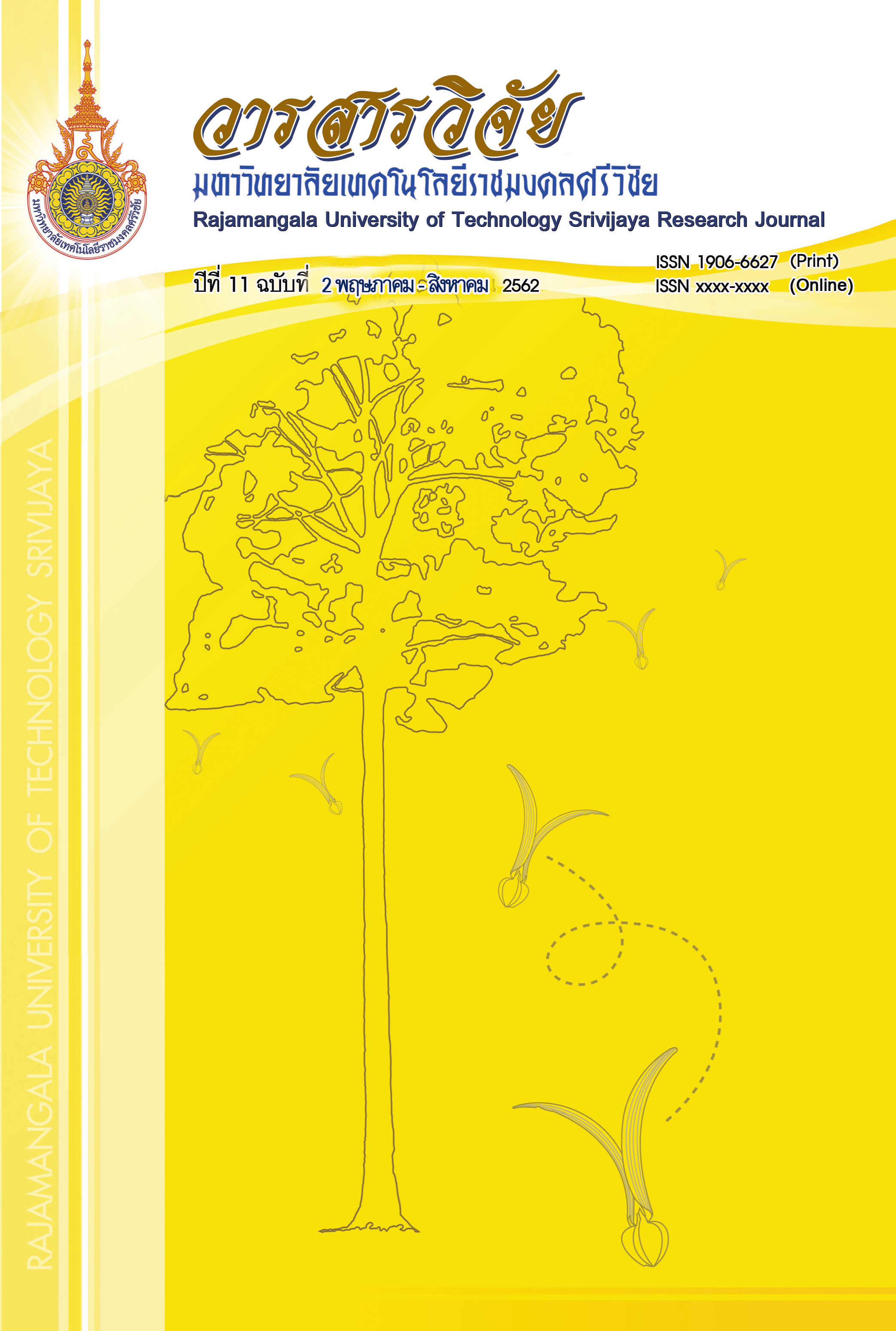Formulating of Fruit Coating Wax by Using Fat from Palm Oil Industrial Wastewater as Raw Materials
Keywords:
palm, wastewater, fat, coating wax, TH-ENV waxAbstract
Grease in palm oil industry’s wastewater was collected using grease trap. Fat was separated from grease in watsewater by mixing acetic acid 5% (3:1), 3,000 rpm, 15 minutes centrifugation. Three layers were formed: fat, liquid and sludge. Fat was collected and cleaned by centrifugation with pure water at 3,000 rpm speed, 15 minutes, 3 times. Metalic contaminants in wastewater, crude fat and cleaned fat were tested. The reults showed that Fe, Mn and Zn were decreased after centrifugation, while Cu and Al were increased. After cleaning processes Fe, Mn, Cu and Zn were greatly decreased. Al in cleaned fat was considered as nontoxic metal. Cleaned fat was used as raw materials of fruit coating wax (TH-ENV wax). Product of this study is TH-ENV wax, a bilayer composite wax. Ingredients were fat, Siam weed extracts, Tacca’s starch in water (3:1), chitosan and water (30, 5, 10, 5, 50 % v/v respectively). Triton X-100 was emulsifier. Wax efficiencies were tested on banana. Gas chromotography was investigated to study on CO2 and C2H4 released from banana fruit per hour at day 1, day 3 and day 5. The results showed that no significantly difference in releasing of CO2 and C2H4 from TH-ENV wax coated, commercial wax coated and unwaxed banana (a = 0.01). At day 5 of storage deteroriation, change in peel color, change in peel texture, an increase in pulp softness were found in the TH-ENV coated bananas while no deterioration, change in peel color, peel texture, and pulp firmness were observed in commercial wax coated bananas. Unwaxed bananas (control) began deteriorating at day 3 of storage.
Downloads
Published
How to Cite
Issue
Section
License
The content and information in the article published in Journal of Rajamangala University of Technology Srivijaya It is the opinion and responsibility of the author of the article. The editorial journals do not need to agree. Or share any responsibility.







